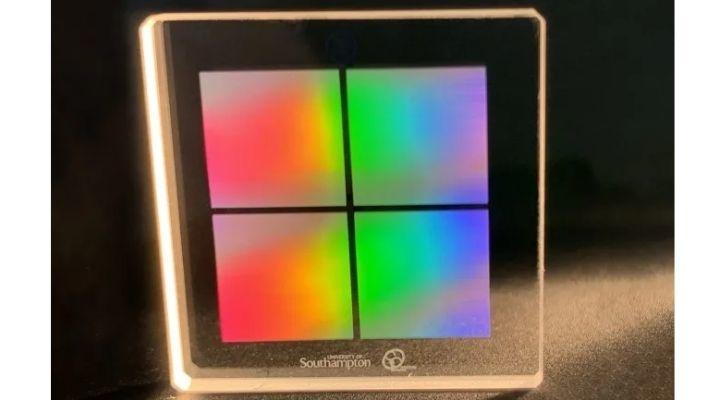Scientists at the University of Southampton have achieved a data storage breakthrough, offering intense density and long-term archiving capabilities. With this new data storage, you can easily store up to 500 terabytes on a single CD-sized disc. Whether the data is information from museums and libraries to a person’s DNA records, it can store it all and much more!
This technology is known as five-dimensional (5D) optical storage and was first demonstrated back in 2013 when scientists were successful in using it to record and retrieve a 300-kb text file. It might not seem like much, but at that time, it was a breakthrough in data storing technologies just like how floppy discs played the same part some thousand years ago.
The data is written using a femtosecond laser which emits short but powerful pulses of light, forging tiny structures in glass that are measured in nanoscale. These structures contain information on the intensity and polarization of the laser beam in addition to the 3D space, hence it is referred as 5D data storage.

The team from Southampton demonstrated the progress of this technology back in 2015 by saving digital copies of major documents such as Universal Declaration of Human Rights, the King James Bible and the Magna Carta. This 5D data storage promises incredible thermal stability and a lifetime guarantee, unlike the typical hard-drive memory we use today.
The team demonstrated this technique by writing 5GB of text data onto a silica glass disc the size of a CD with 100% readout accuracy. And this is nowhere near the actual capacity of the disc to store data as it is capable of holding 500TB of data, making it 10,000 times denser than a Blu-ray disc.

“This new approach improves the data writing speed to a practical level, so we can write tens of gigabytes of data in a reasonable time,” says Yuhao Lei from the University of Southampton in the UK. “The highly localized, precision nanostructures enable a higher data capacity because more voxels can be written in a unit volume. In addition, using pulsed light reduces the energy needed for writing.”
The study was published in the journal Optica.


